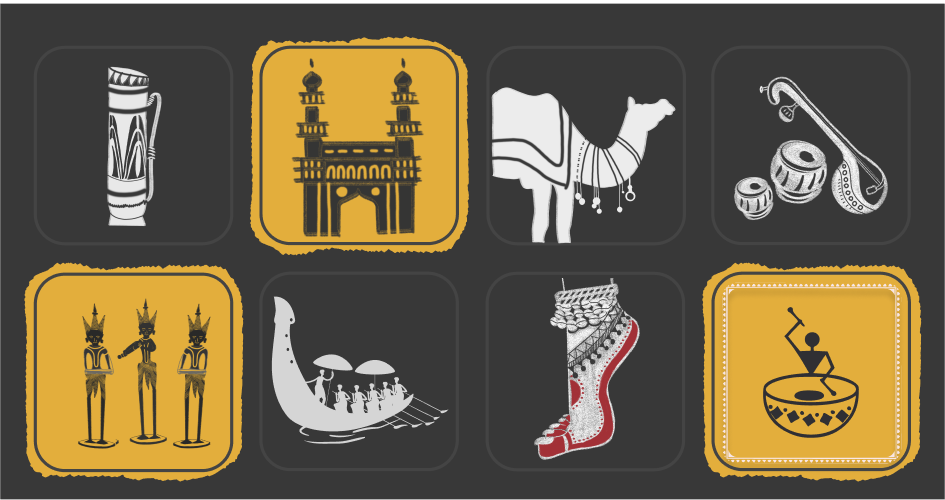Chozha Parvathi: The Divine Feminine Power of the Chola Dynasty
The colossal works of the Chola dynasty, which flourished from the 9th to the 13th centuries, are some of the best legacies left behind for South Indian art and culture and spirituality. The most prominent of their several important legacies includes the gorgeous bronzes. The best among these is the Standing Parvati, dated to the first quarter of the 10th century. This sculpture, made within the fecund tradition of Tamil Nadu, stands to represent the divine beauty and spiritual significance that concretize the Chola period.
The Golden Age of Chola Sculptors
The first years of the Chola period marked the height of glorious cultural and artistic progress. Bronze works made with the lost-wax process are from the golden period under the patronage of the Chola kings. The technique that gave the artists the possibility to make such elaborate figures with details well understandable, lifelike expression, and fluidity and movements in the figures-all these could be seen in the delicate work on the Standing Parvati, which is a product of that golden age.
The sculpture is a fine representation of Parvati, which is the Goddess of Power, Fertility, and Divine Feminine Energy. In Hindu mythology, Parvati is the central figure as she is the consort of Lord Shiva. This one represents cosmic balance and harmony to the male and female forces.
Iconography of the Standing Parvati
The Standing Parvati, of the first quarter of the 10th century, is characterized by a serene yet powerful stance, which highlights the dual personality of the goddess from the nurturing mother to the powerful protector. Her stance is called "tribhanga" or three bends in Indian art where the body is curved at three places-neck, torso, and knee-giving the figure a swaying, curved shape. This stance adds to the natural elegance of Parvati, holding taut her divine beauty. The expression is tranquil and poised while the adorned form denotes the queenly status on earth and the crown adorning her head saying that she is the Queen of the World.
The Chola artists have taken great care regarding the human form in all respectings, so the whole sculpture of Parvati is so sensual and spiritual that has grasped the divine essence she owns. Her slightly tilted head with a gracious curve over her body showed out compassion-a characteristic that has set Parvati apart in the pantheon of Hindu gods and goddesses.
Spiritual and Cultural Significance
The sculptures of the Chola period, such as the Standing Parvati, were not only admired for their form and beauty but were greatly worshipped as deities. These bronzes are found in temples and daily worshipped and carried out in processions; thus, devotees can have the actual body of their gods and goddesses. The sculpture of Parvati in a temple or house is believed to invoke her blessings so that the person who made it would experience her protection, prosperity, and spiritual well-being.
To the Cholas, art could assume a positive extension of their worship, and such creation was not only a craft but also a religious act. In this respect, the Standing Parvati epitomizes the relationship existing between religious ideology and artistic expertise in the fact that each piece was crafted to induce a state of connection between the worshipper and the divine.
The Legacy of Chola Bronzes
The Standing Parvati is one of the greatest Chola bronzes-a group of magnificent sculptures, each style and perspective a testament to the legacy of the great Chola dynasty. These artists are now truly wondrous treasures not only in temples but also in museums around the world, where they are paid reverence to their beauty and cultural values. Such details-those fine-tuned touches touch on the spiritual, the symbolism, and the deep mastery in techniques that truly inspire both believers and art enthusiasts.
This Standing Parvati from the Chola period is eternally a lasting epitomization of goddess femininity and the artistic heights achieved under the umbrella of one of the most influential dynasties in India. This sculpture-while it does actually remind one of the profound connection that the Cholas cultivated between art, spirituality, and culture over the course of their reign-breathes life into a harmonious blend of grace and power.
Explore our collections in idol, Figurines, Artefacts, Monuments
In concluding, the Standing Parvati is more than an exquisite artefact of the first quarter of the 10th century. It is actually a strong visual testimony to the great artistic genius of the Chola dynasty as well as a good example to their deep spiritual devotion and their lasting influence on the Indian cultural heritage.


